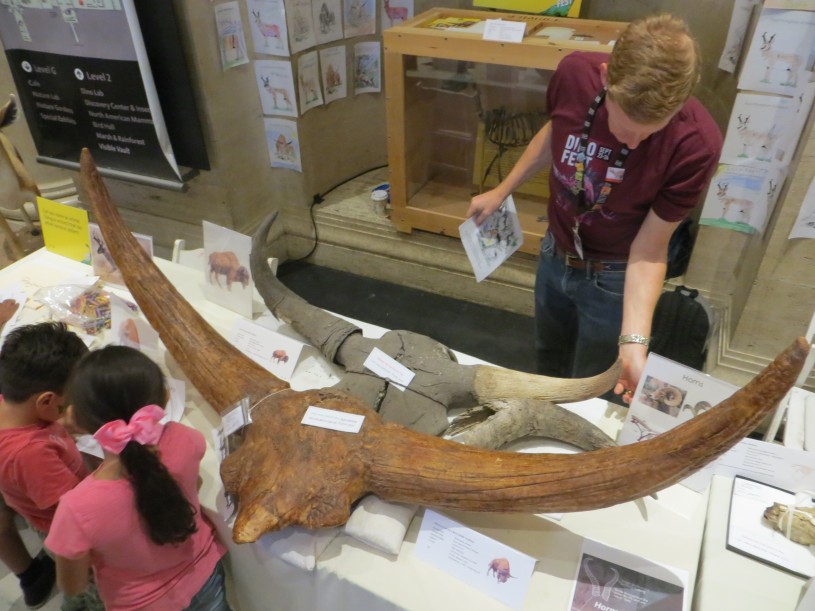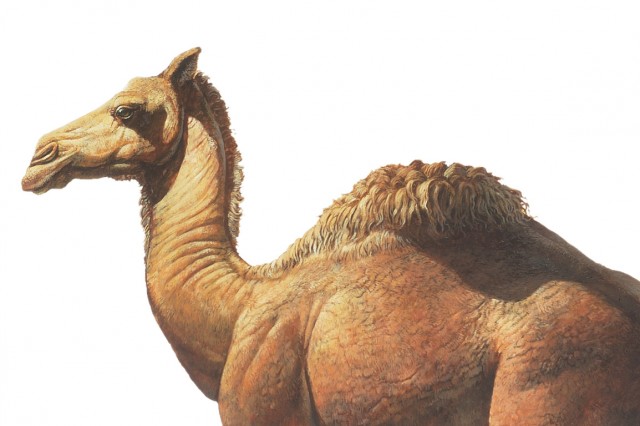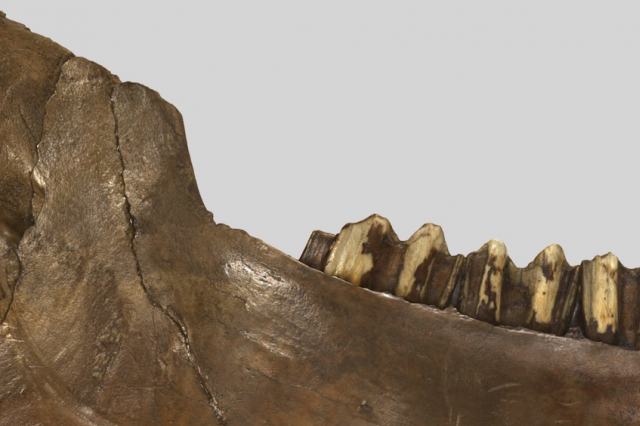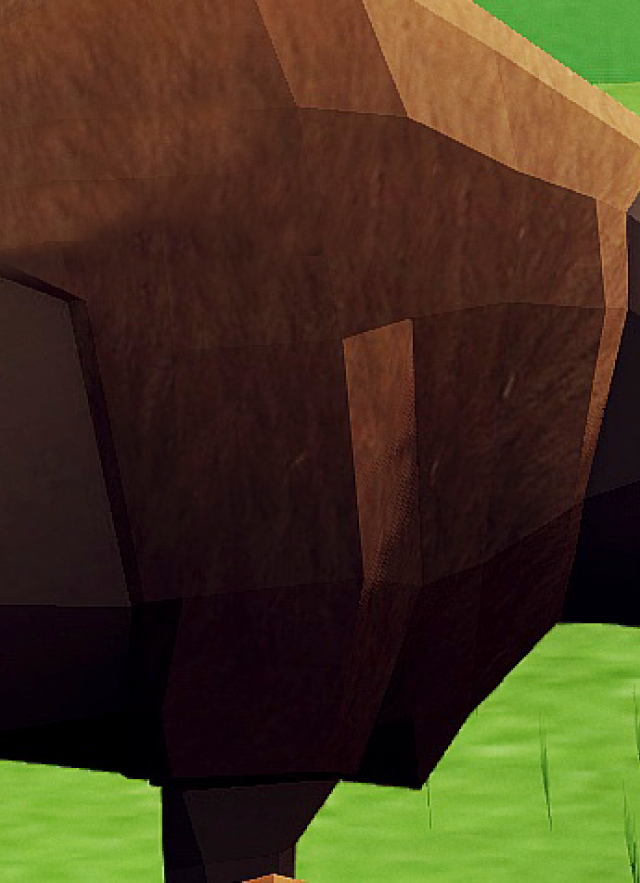
Imagine bison as far as the eye can see. What? I said, “Imagine bison for as far as the eye can see!” WHAT? I CAN’T HEAR YOU BECAUSE OF ALL THESE BISON! I CAN’T HEAR MYSELF THINK OVER THEIR THUNDEROUS STAMPEDING, LET ALONE SEE WILSHIRE.
Meet Bison antiquus!
Though it might be hard to imagine, when humans first arrived in what is now the continental U.S. some 15,000+ years ago, bison were everywhere, and humans definitely noticed. It’s hard not to notice 20–30 million migrating bison. Bison remains have been found at some of the oldest human archaeological sites in North America, indicating that bison, which would go on to support whole civilizations of Native Americans, were valuable sources of food from the start. At the Tar Pits, the extinct Bison antiquus is the most common large herbivore recovered, represented by at least 300 individuals, many of them young.
Bison Back Then
Unlike the native camel, the bison that would eventually become icons of the American West arrived around 240,000 years ago via the Bering Land Bridge into Alaska from Siberia. These megafauna were mega-successful, as evidenced by their abundance in the fossil record, especially in La Brea. Bison are so abundant that they’re indicator fossils, fossils that when found help tell geological time, specifically marking the Rancholabrean North American Land Mammal Age (from 240,000 to 11,000 years ago), which is named after our site.
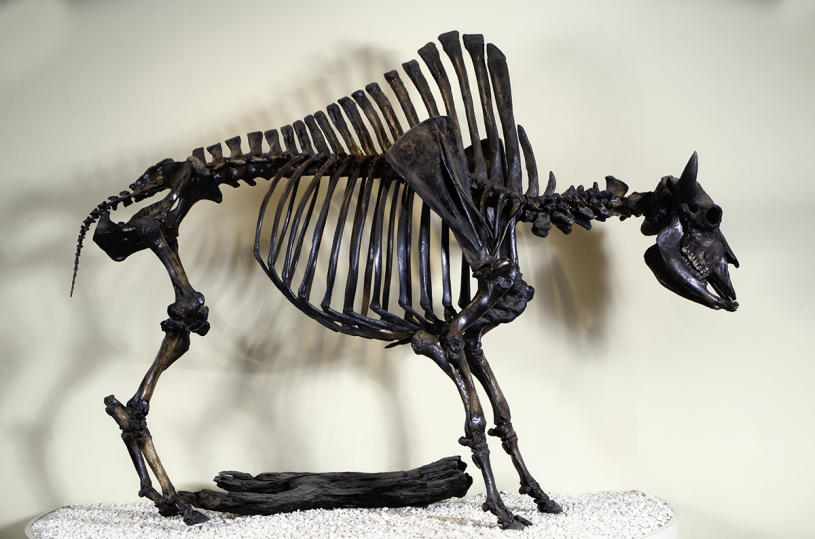
There are actually two species of bison found at the Tar Pits. Believed to be one of the largest ruminants (even-toed, hooved mammal like deer and cattle) of all time, Bison latifrons (which translates more or less to "broad forehead”) was the biggest bison, further distinguished by impressively large horns, which measured as much as 84 inches from tip to tip, or longer than your average Laker is tall.
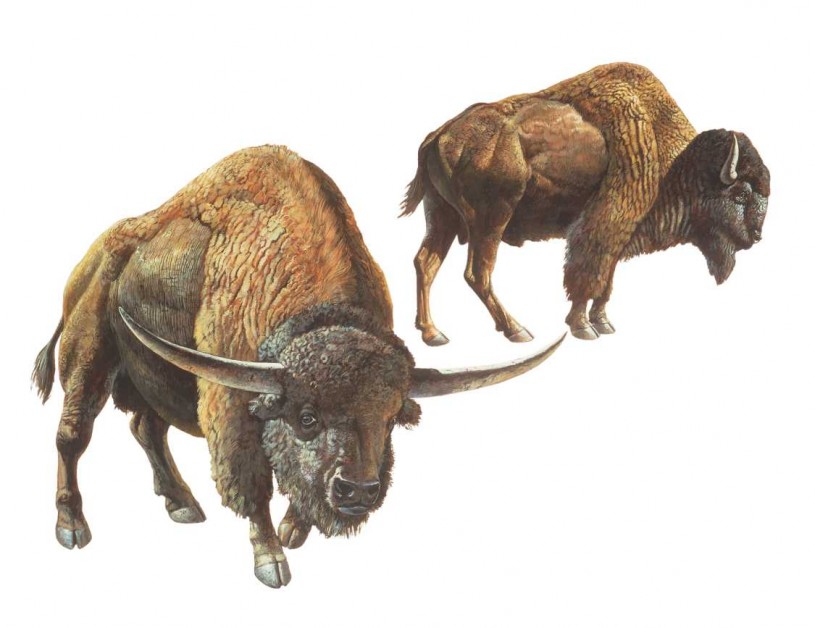
While it didn’t have seven feet of horns, Bison antiquus (which translates to ancient bison) successfully galloped onto the scene around 22,000 years ago. Both bison were much larger than their modern descendants, reaching as much as seven and a half feet in height and weighing around 3,500 pounds. B. antiquus’ direct descendant, our modern Bison bison, are around 15-25% smaller than their ancient kin but still one of the largest living land mammals in North America.

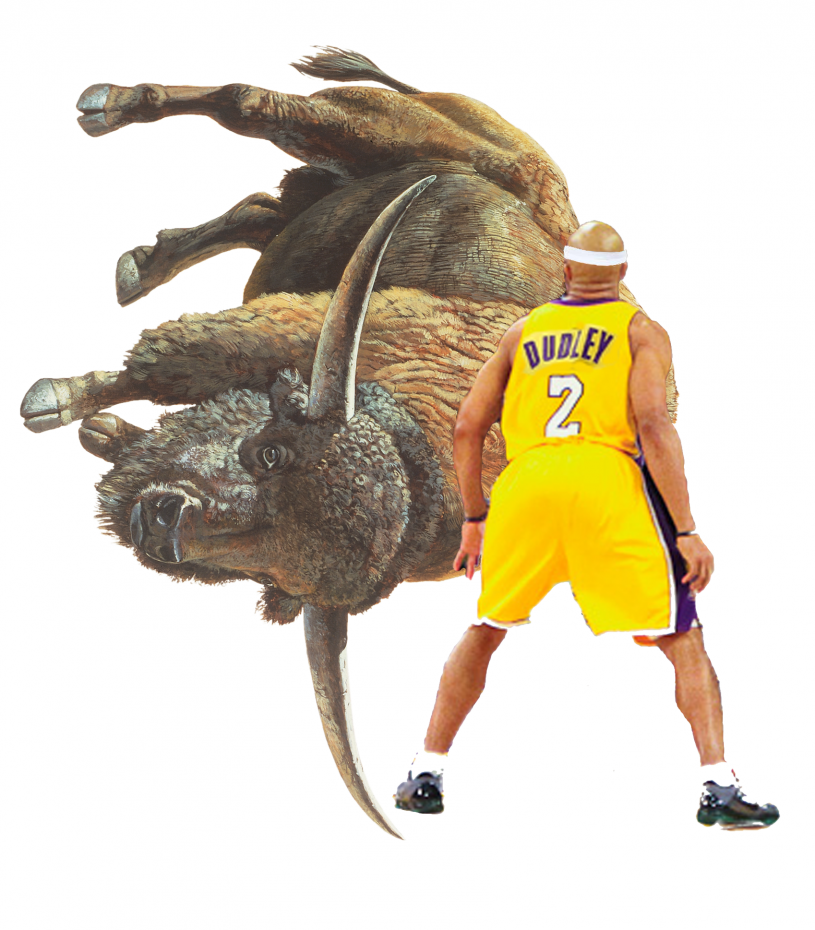
Take a trip to the Pleistocene any day of the week at La Brea Tar Pits where more Ice Age Angelenos are excavated on the daily.
